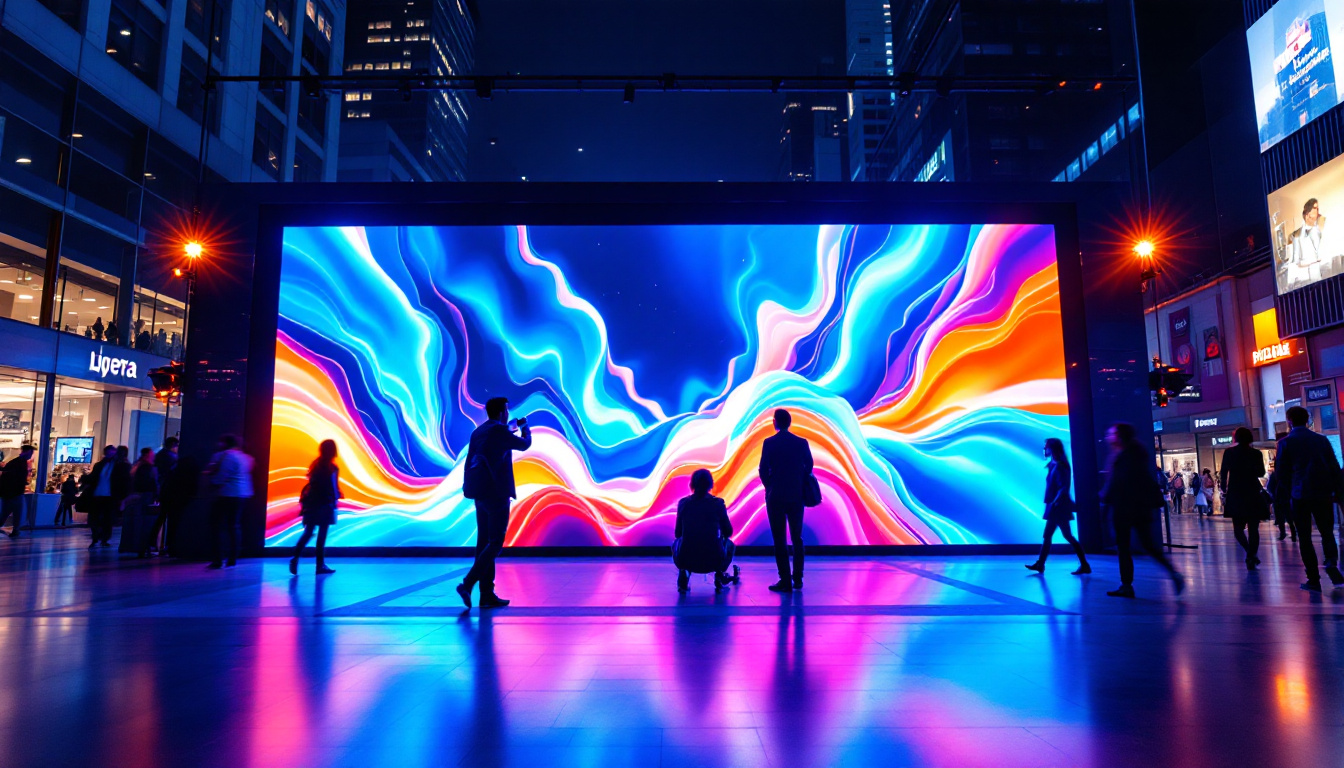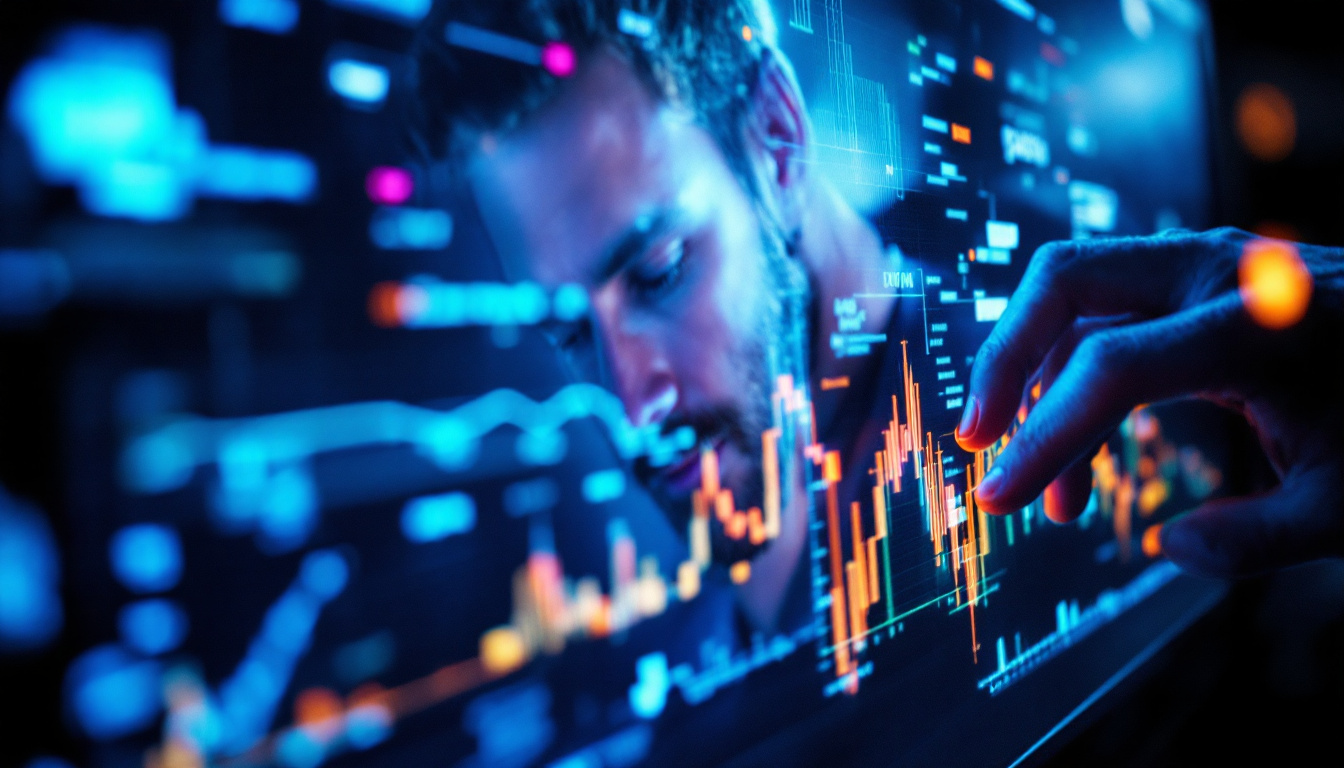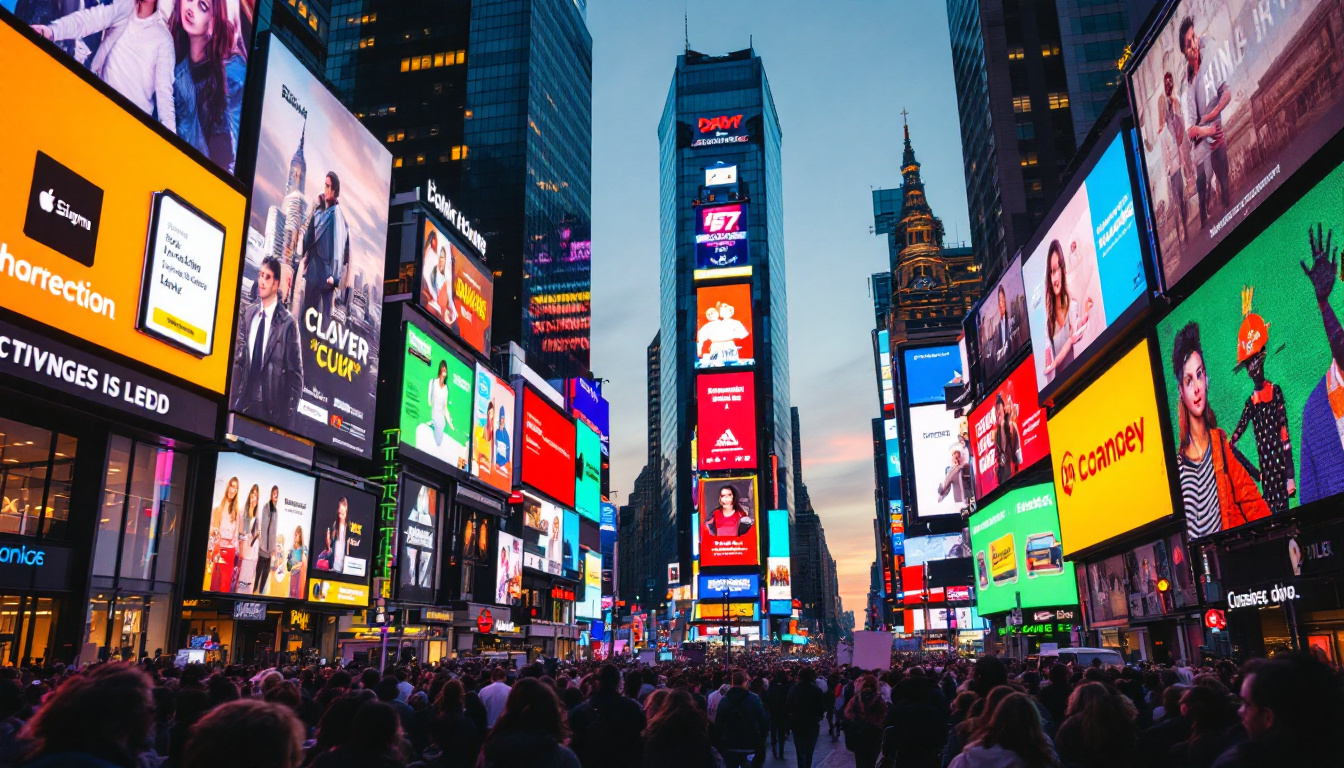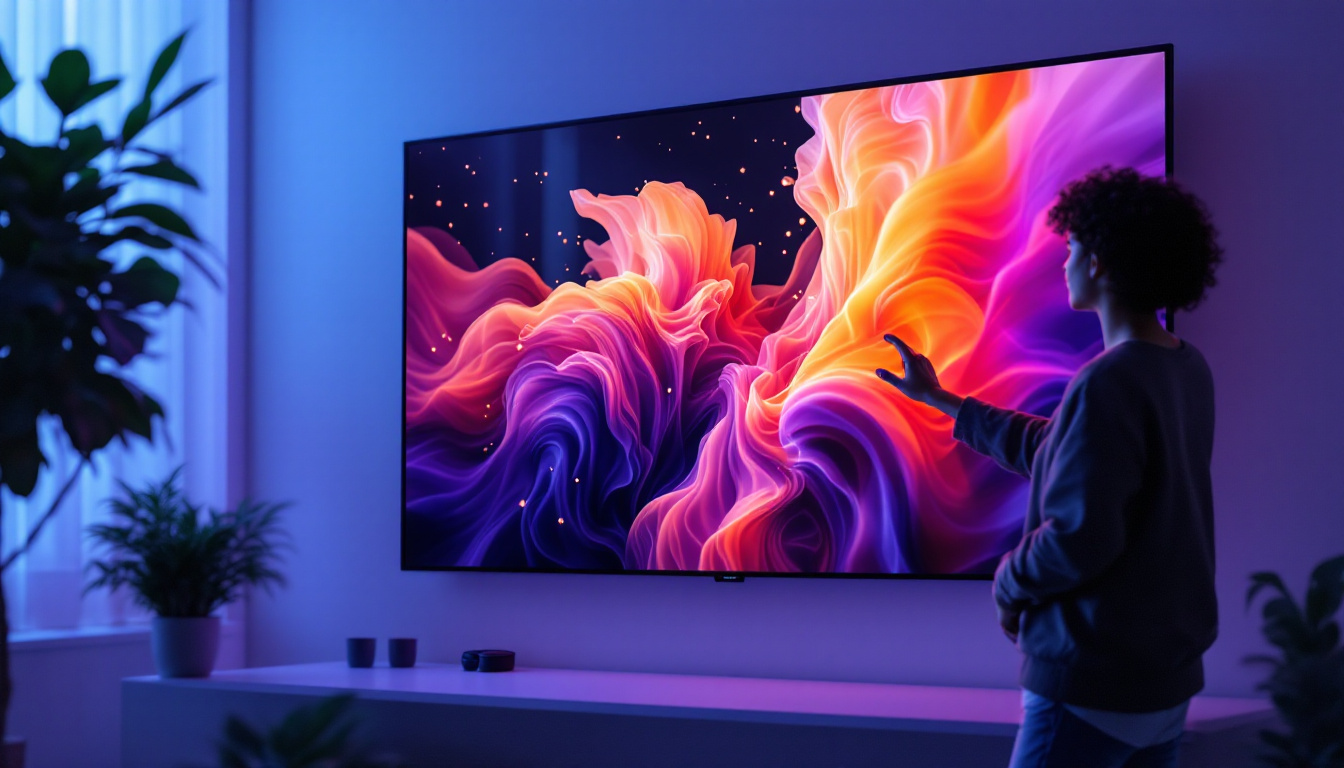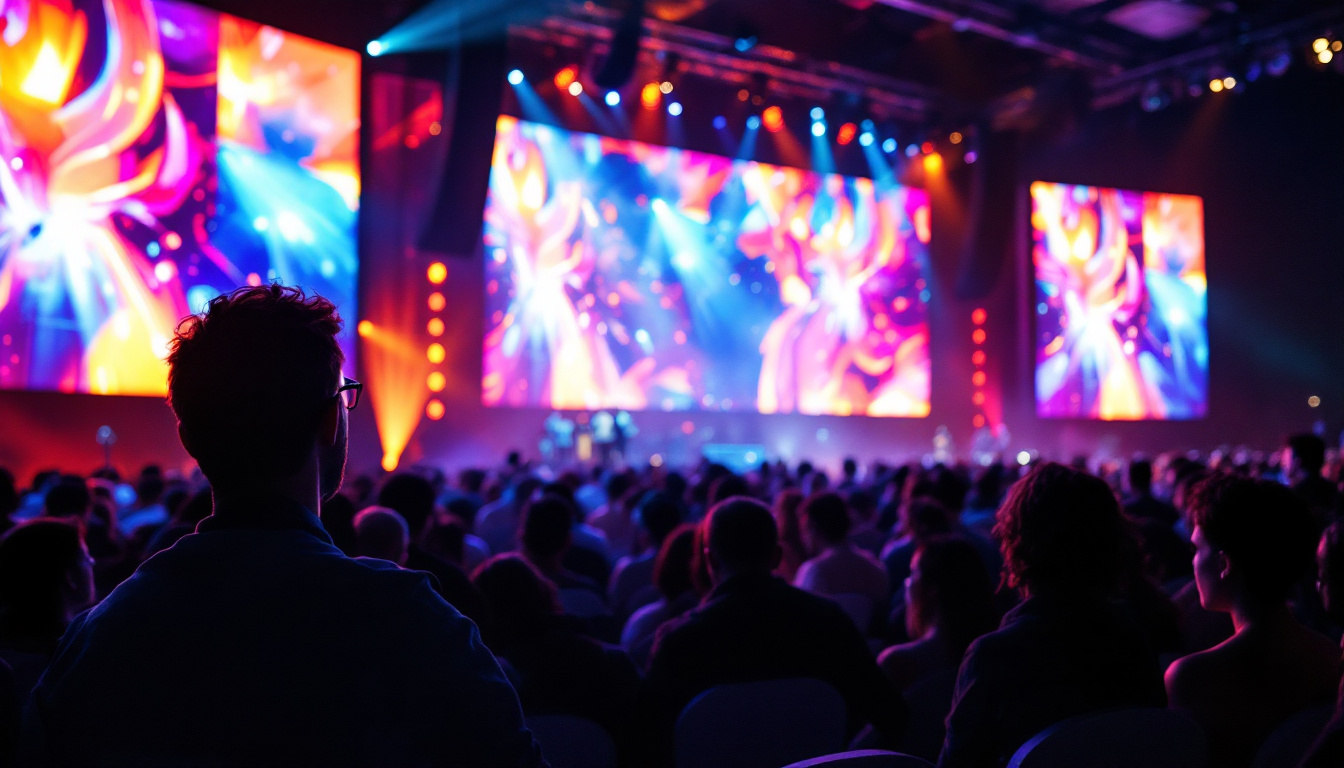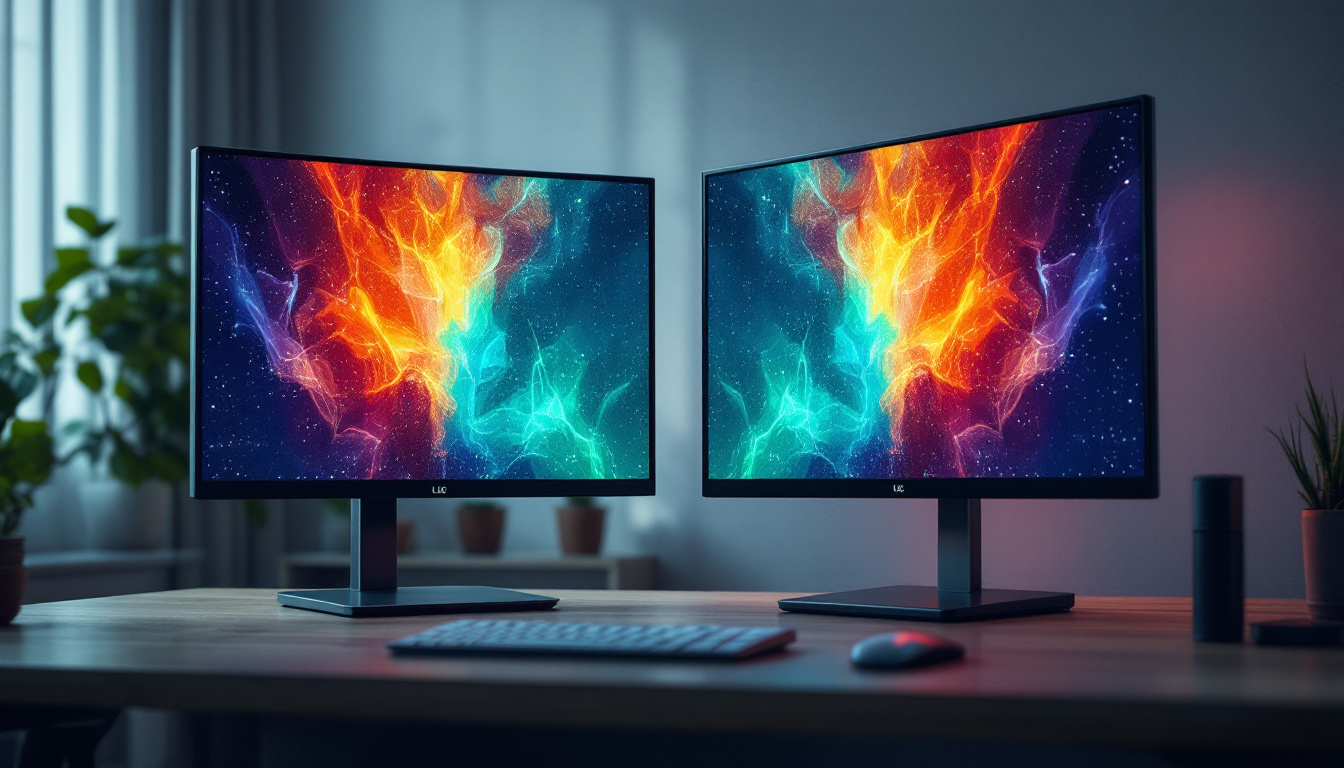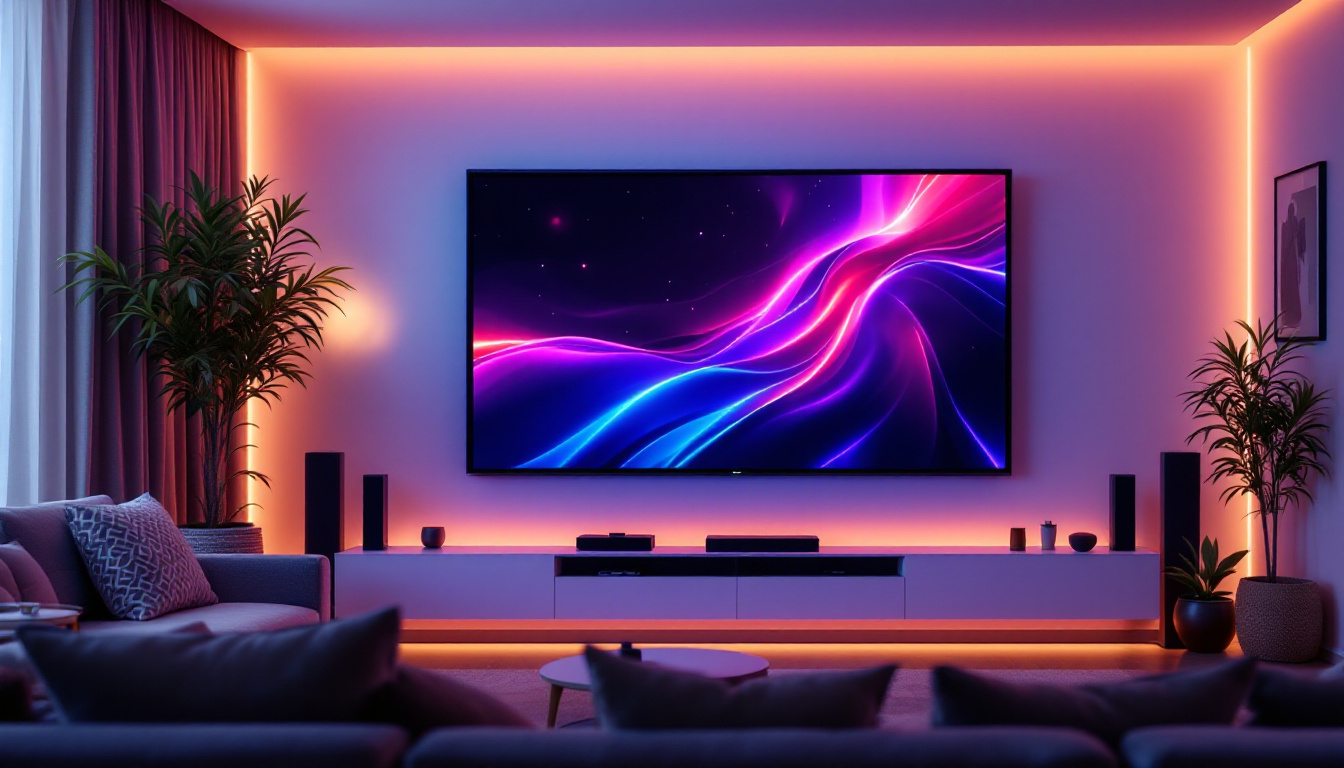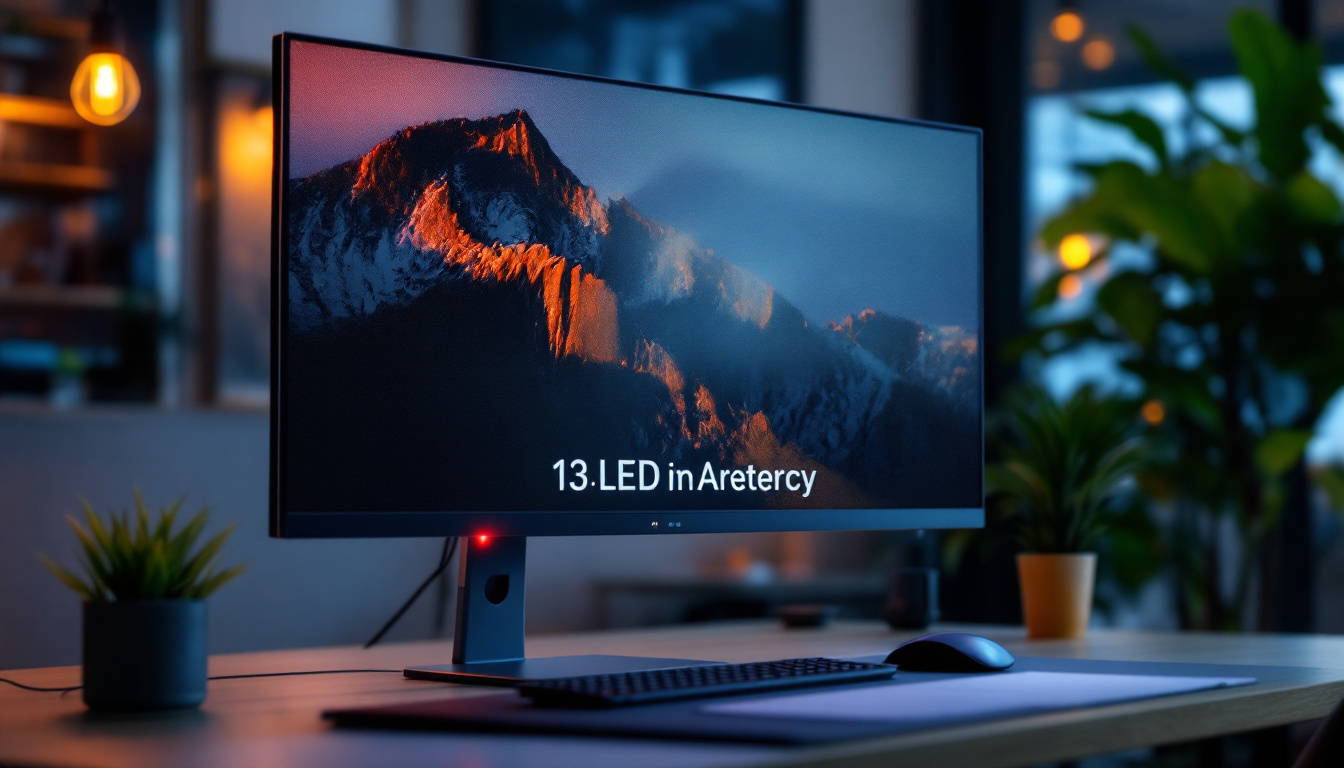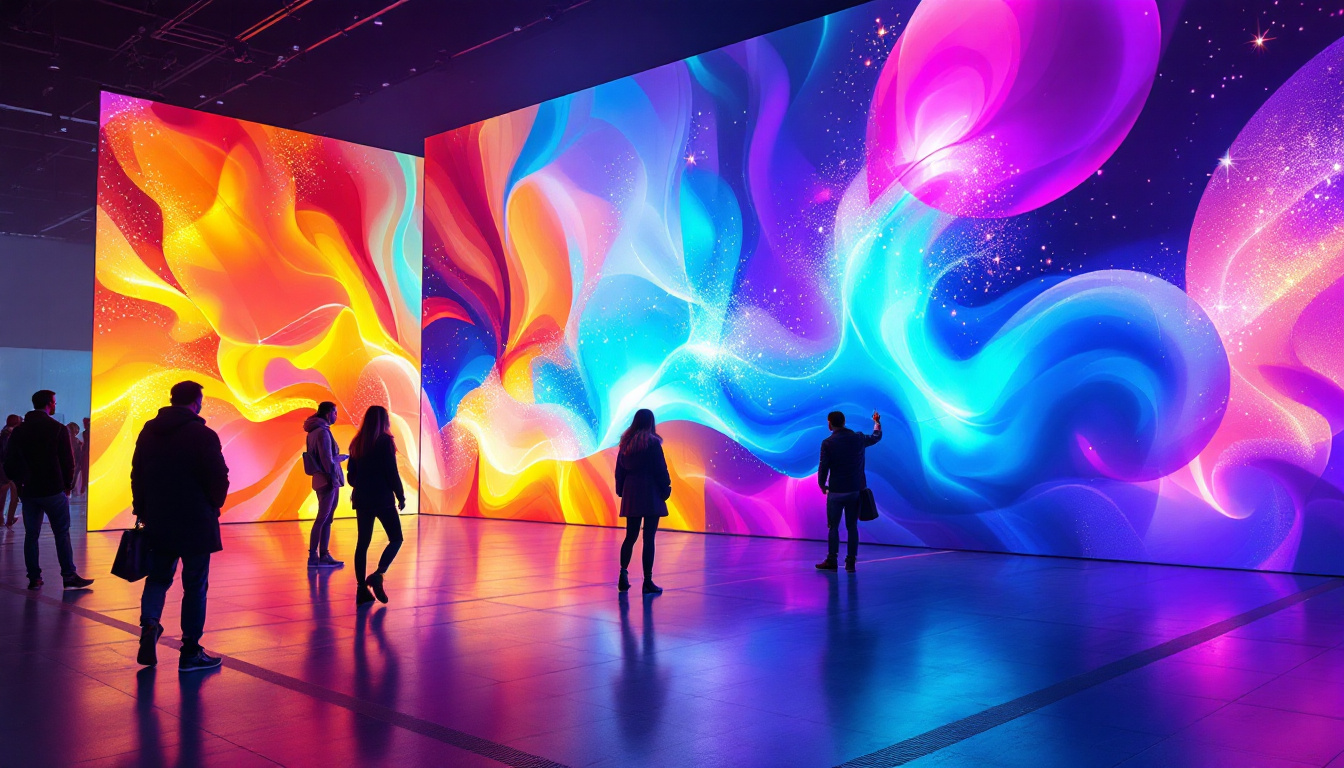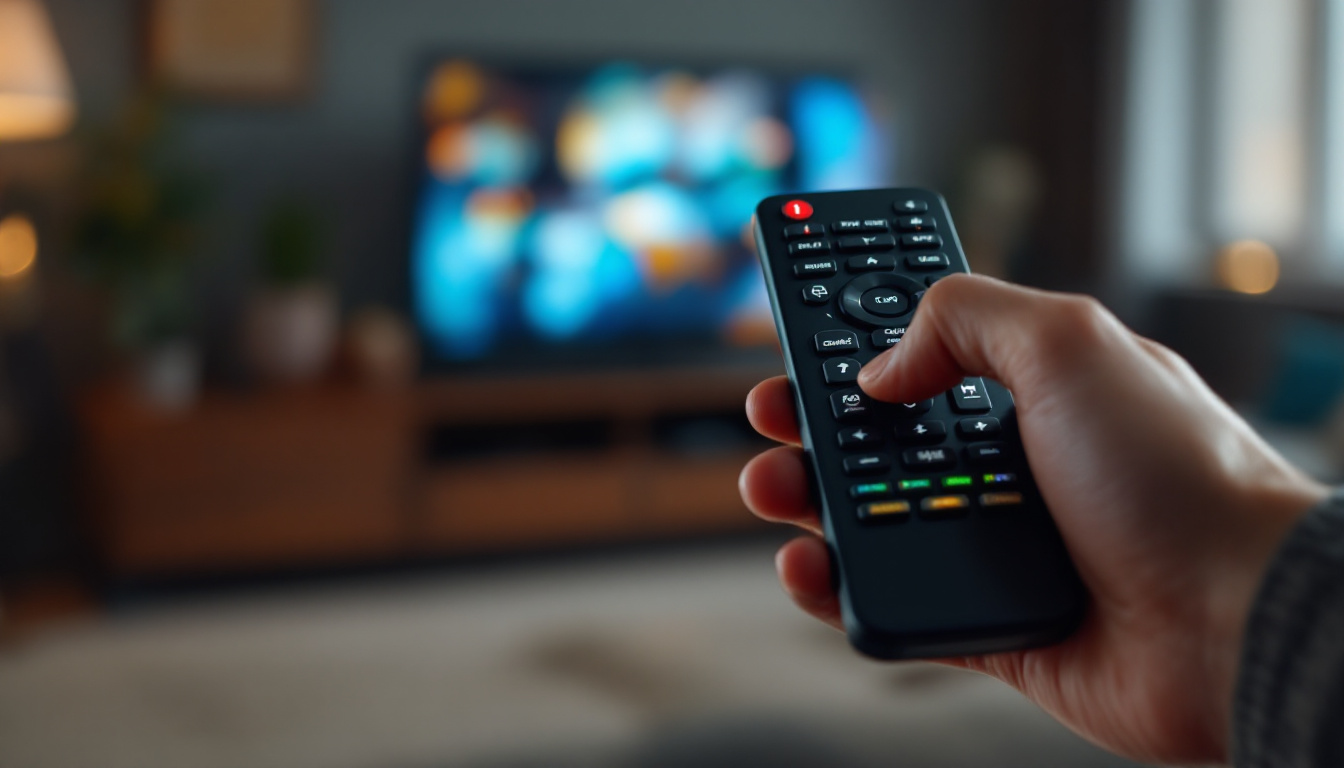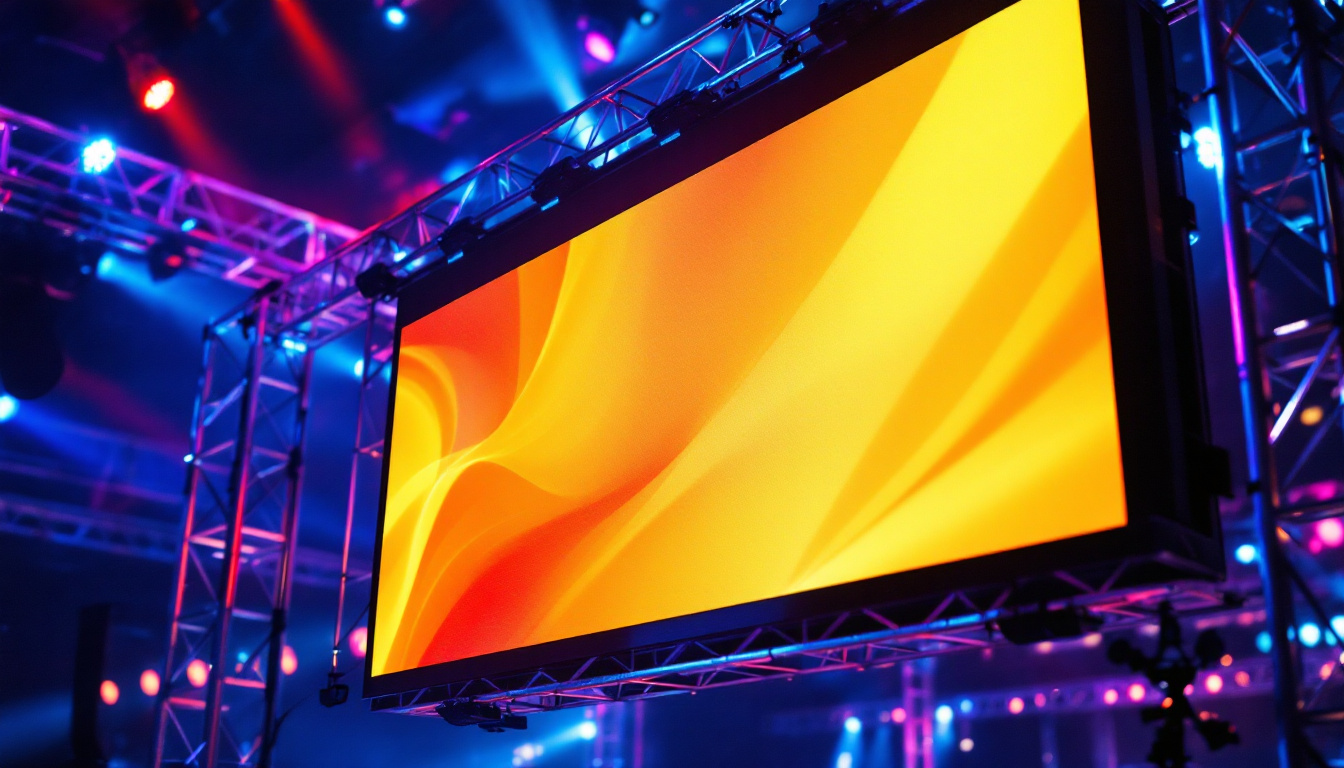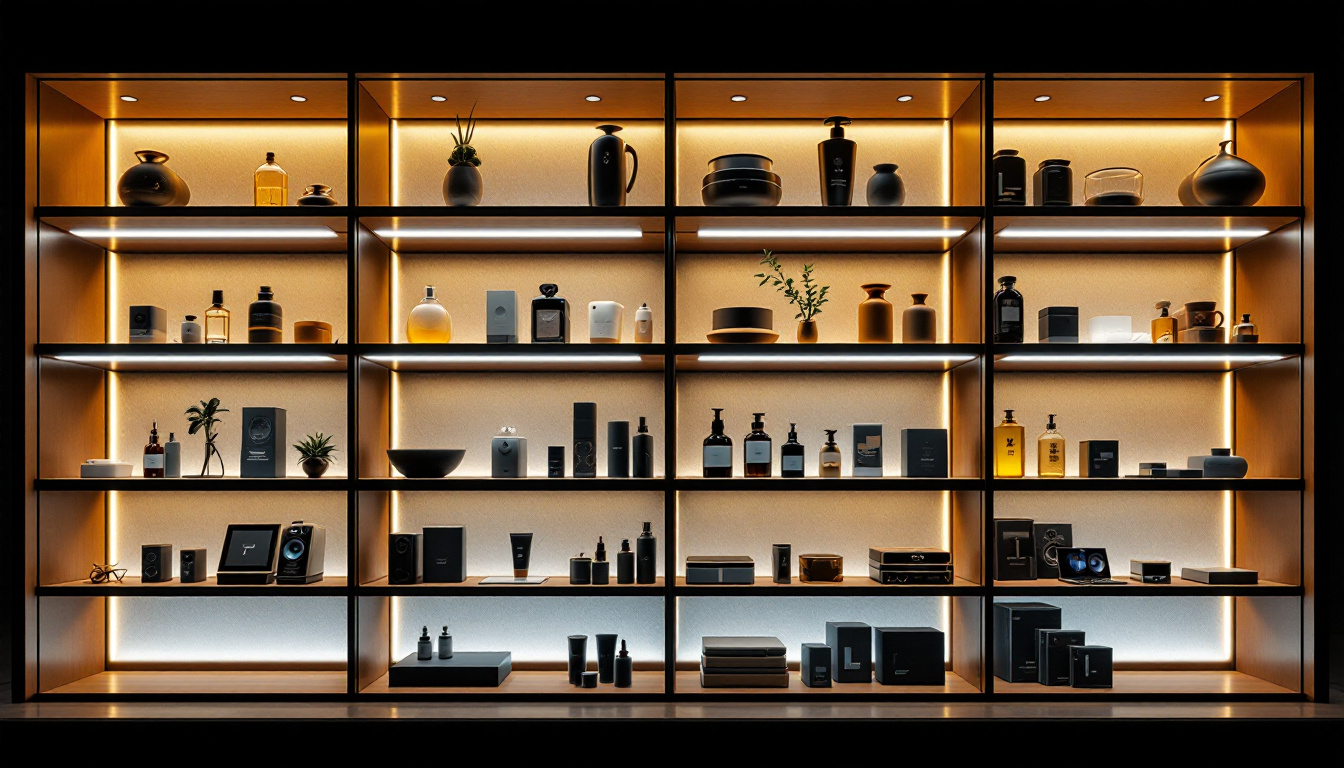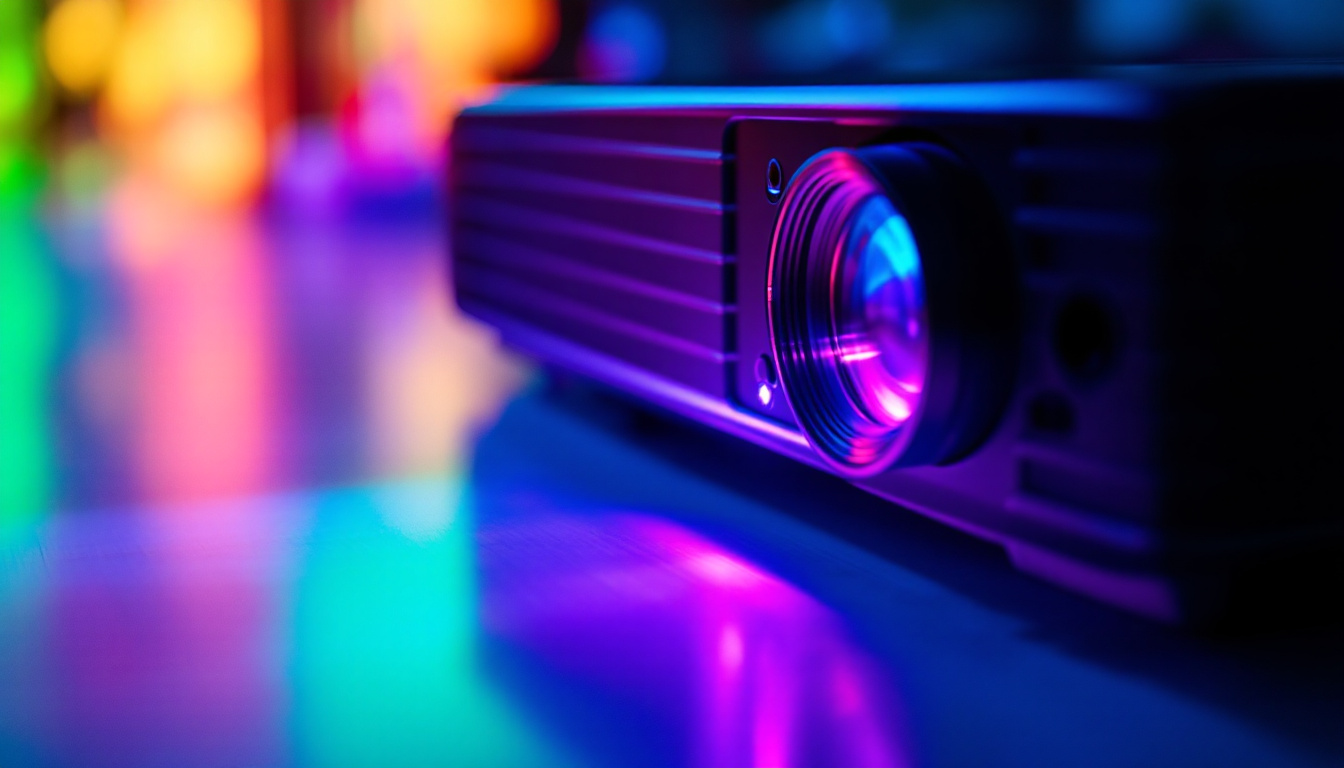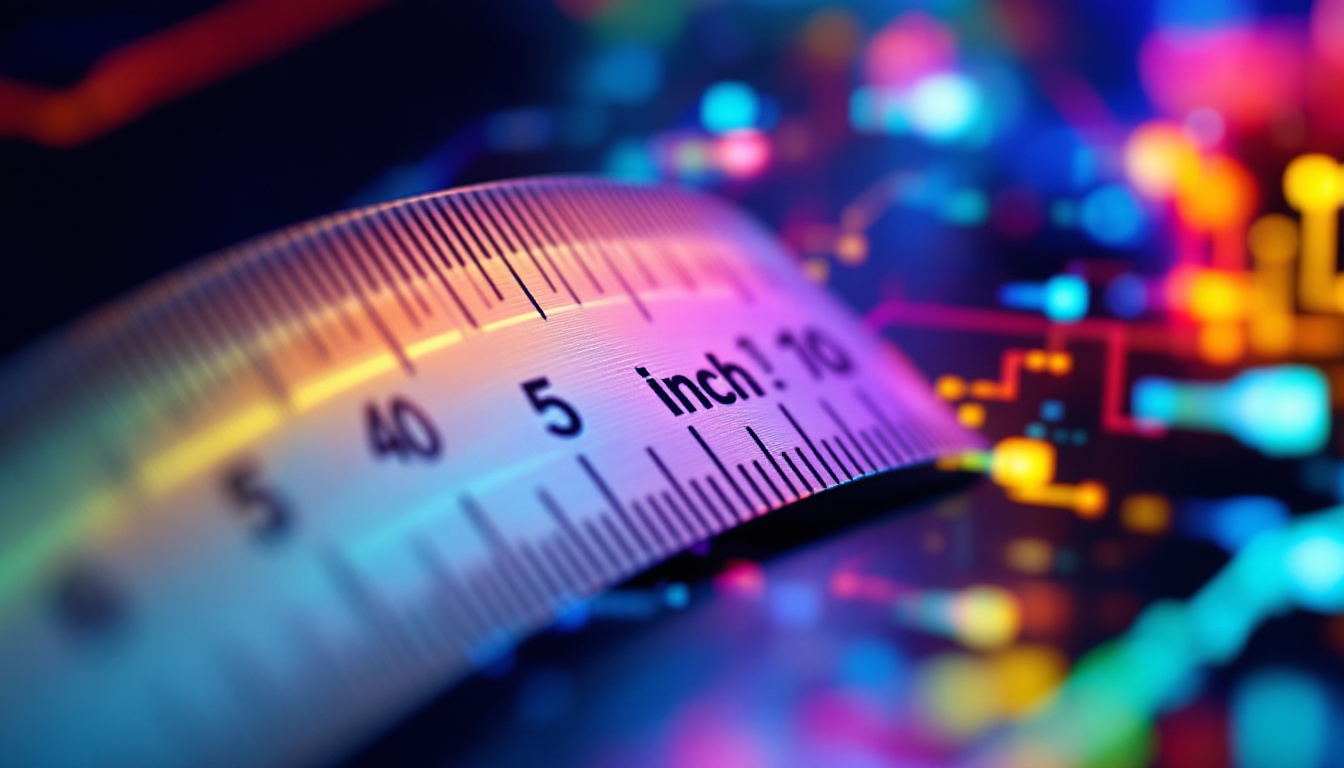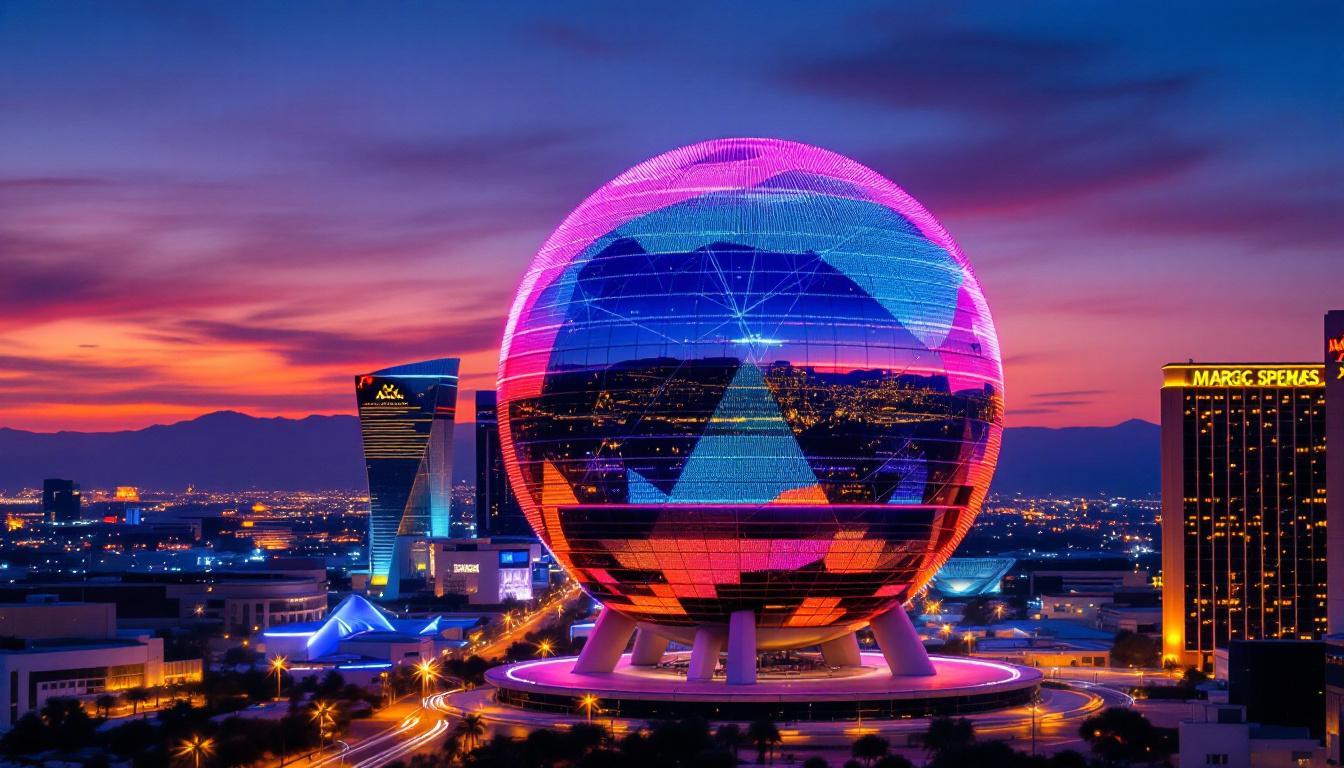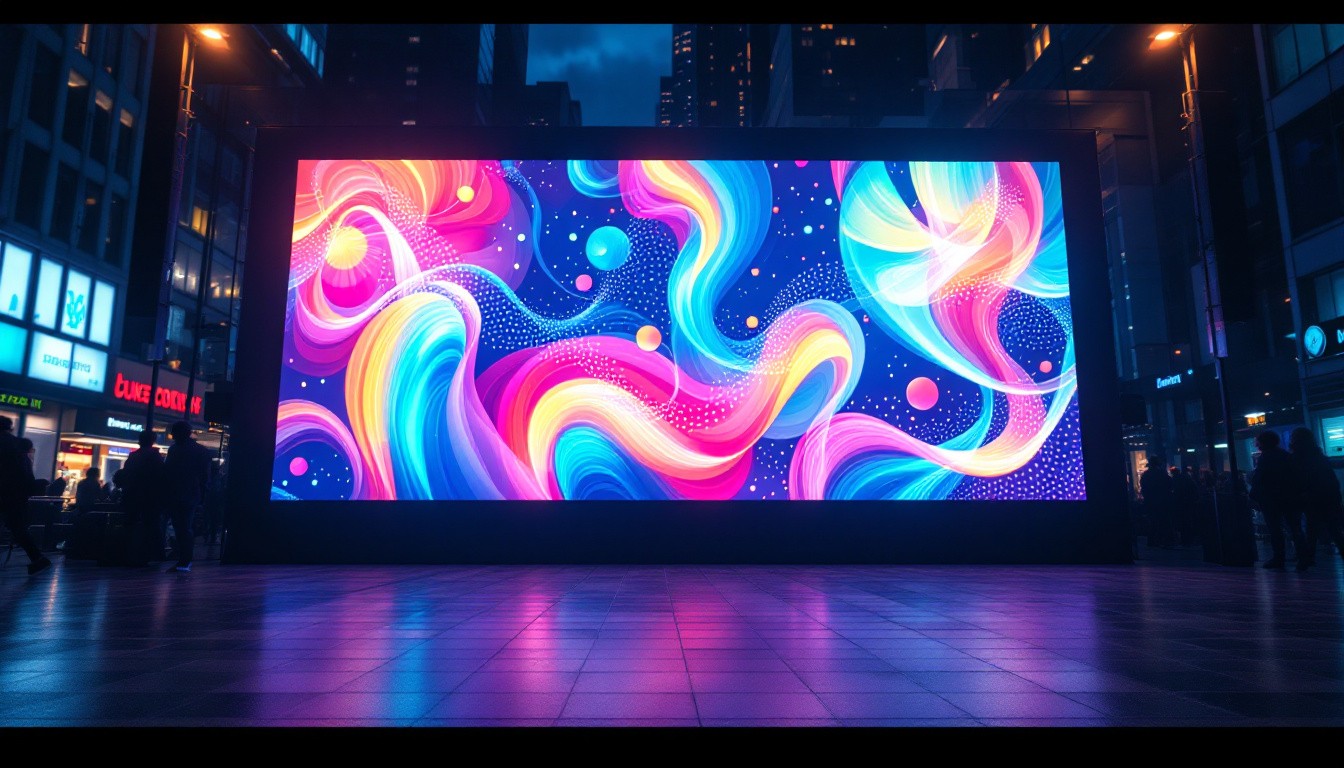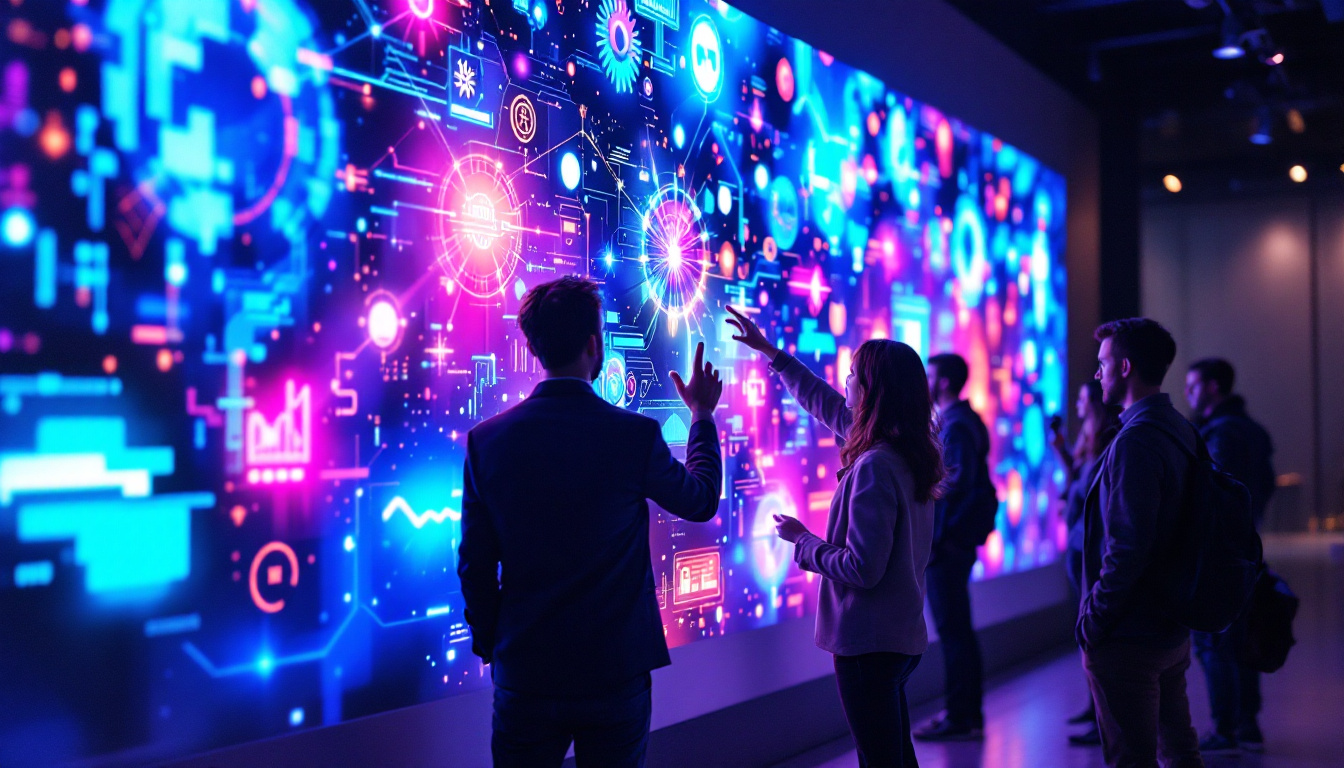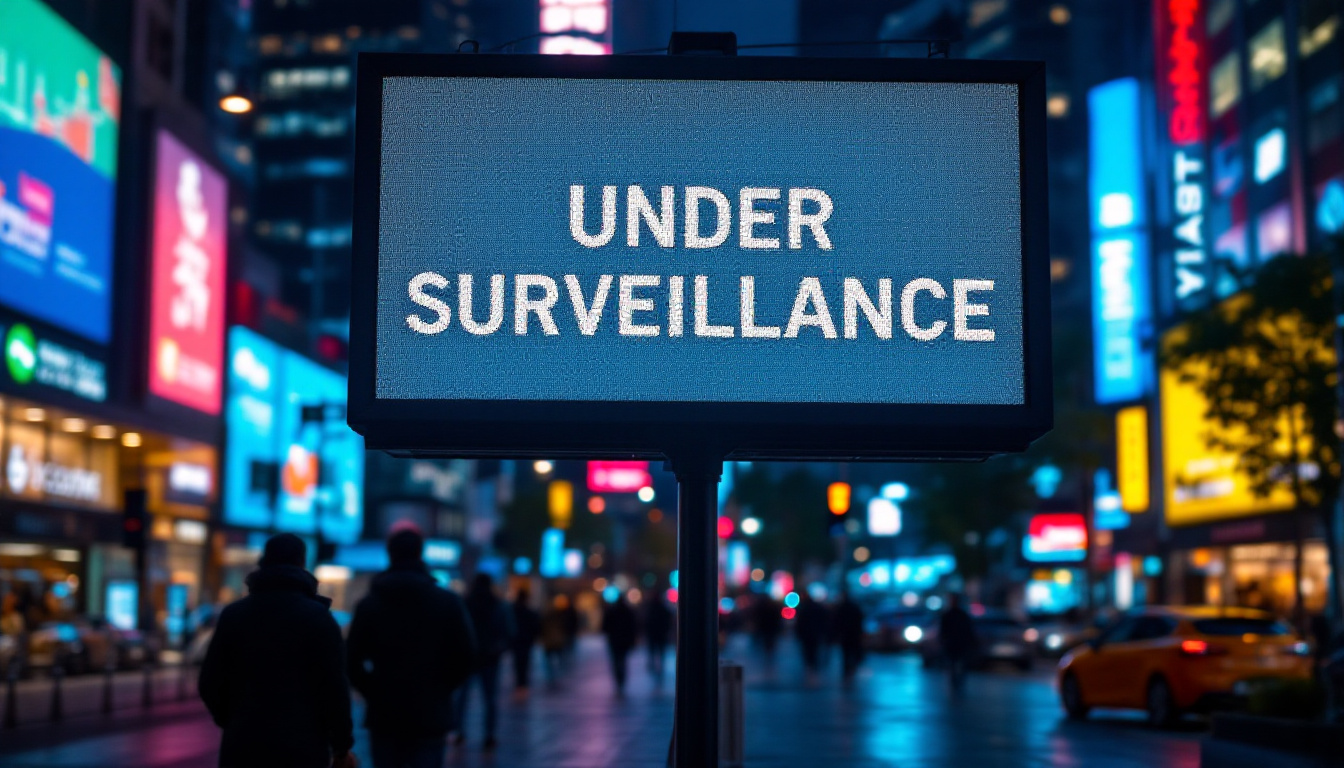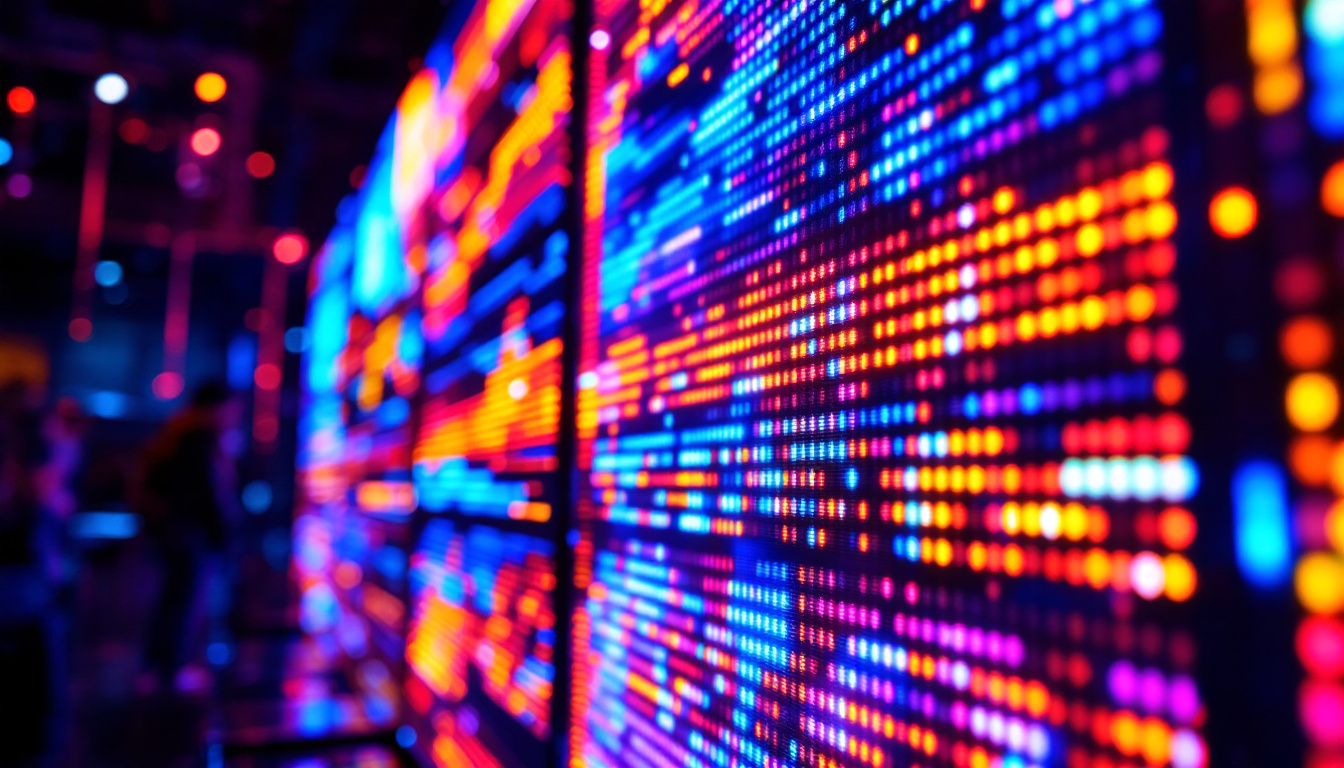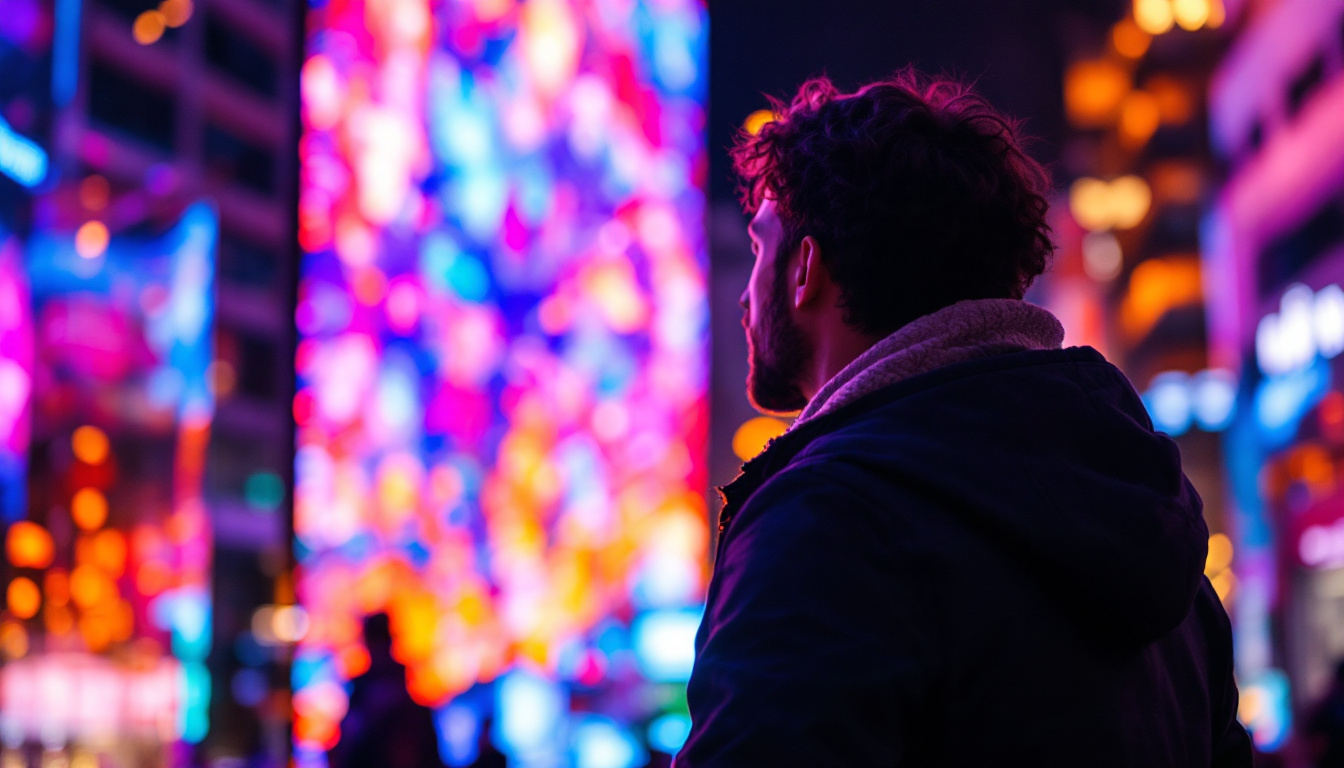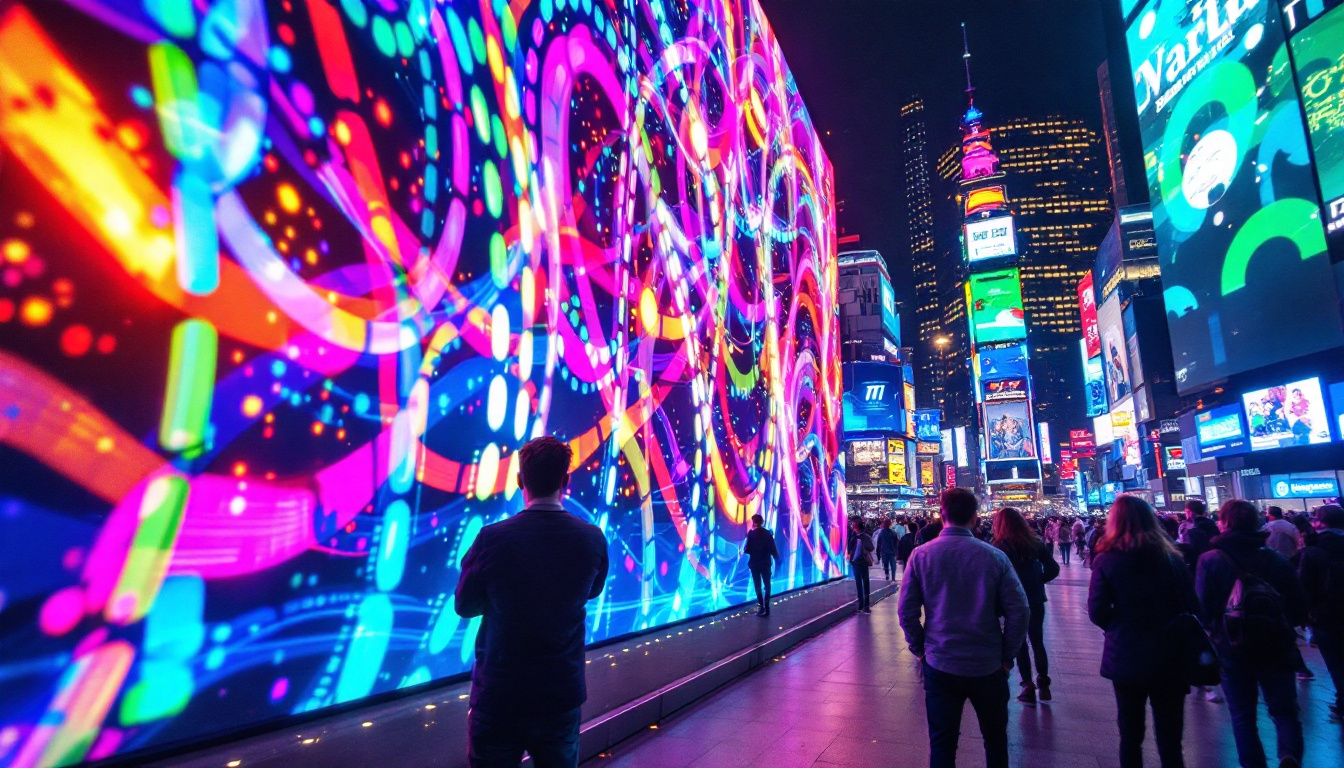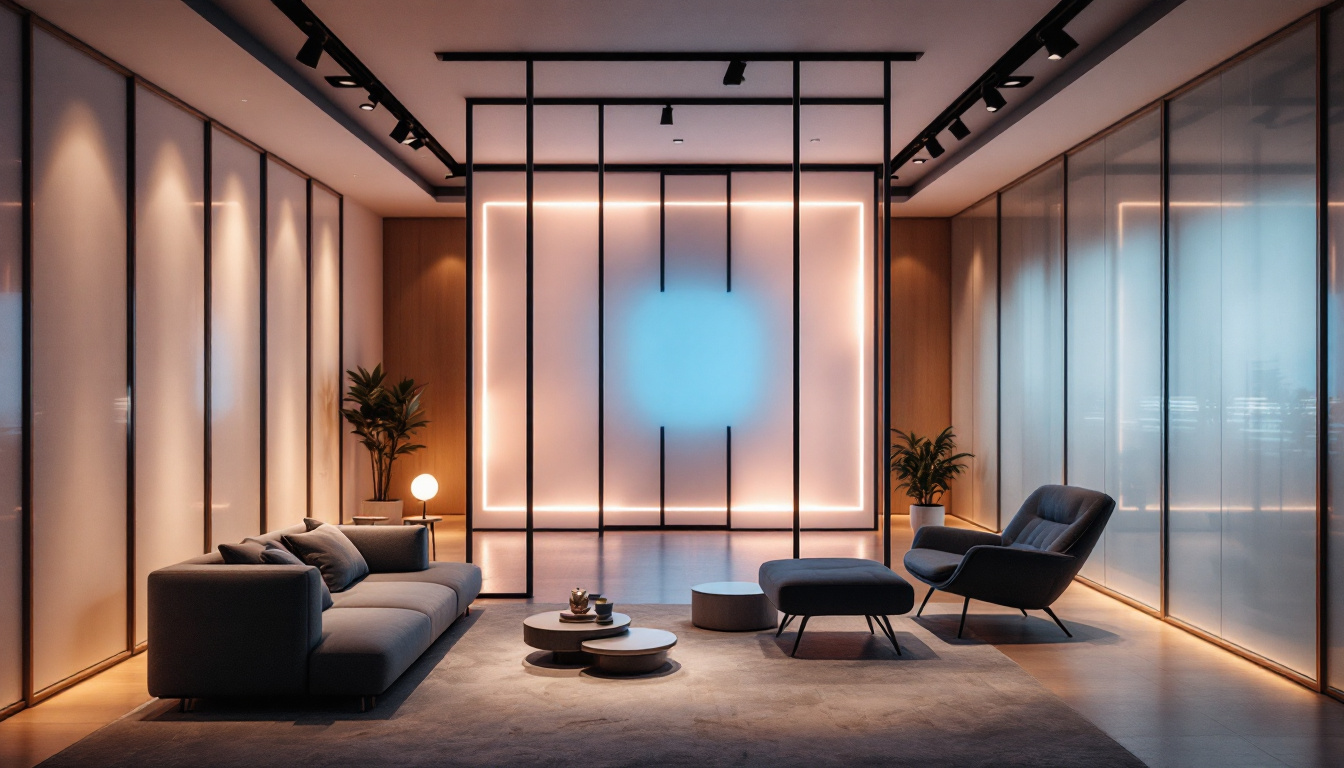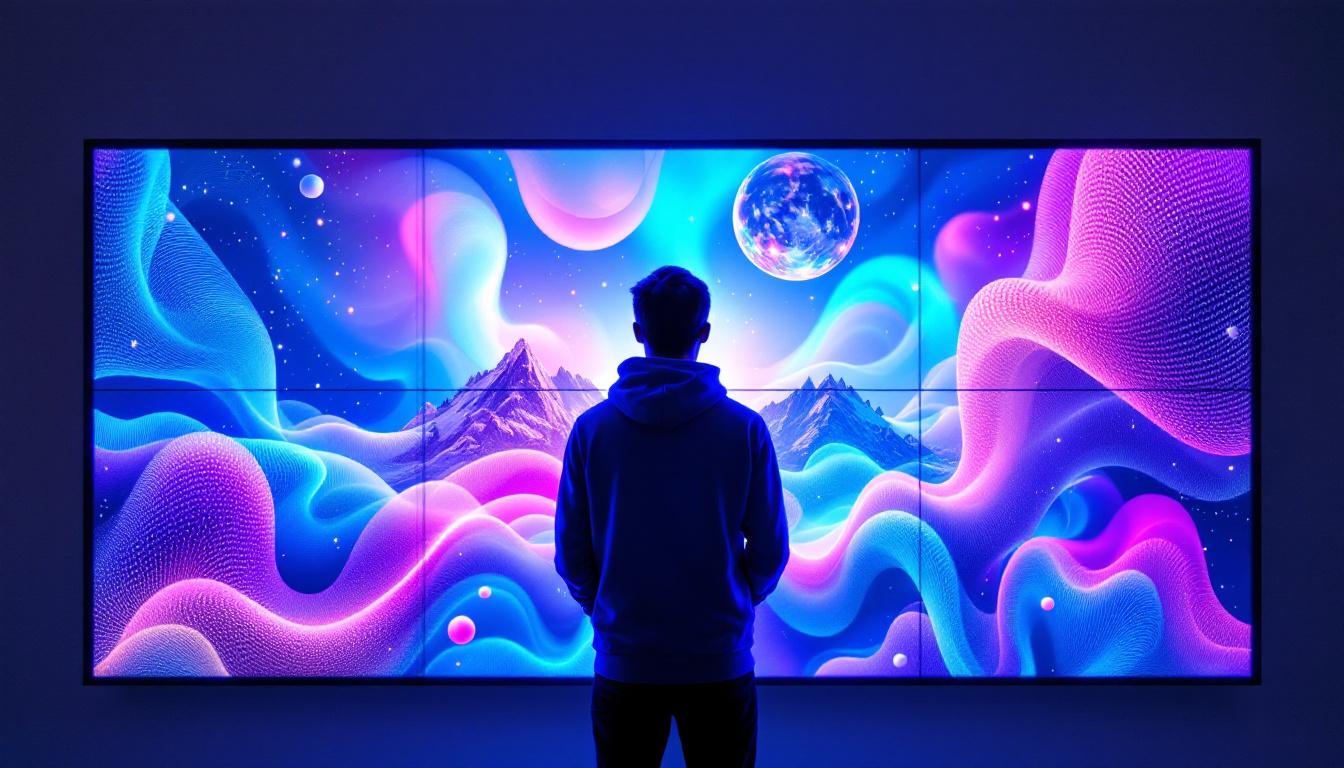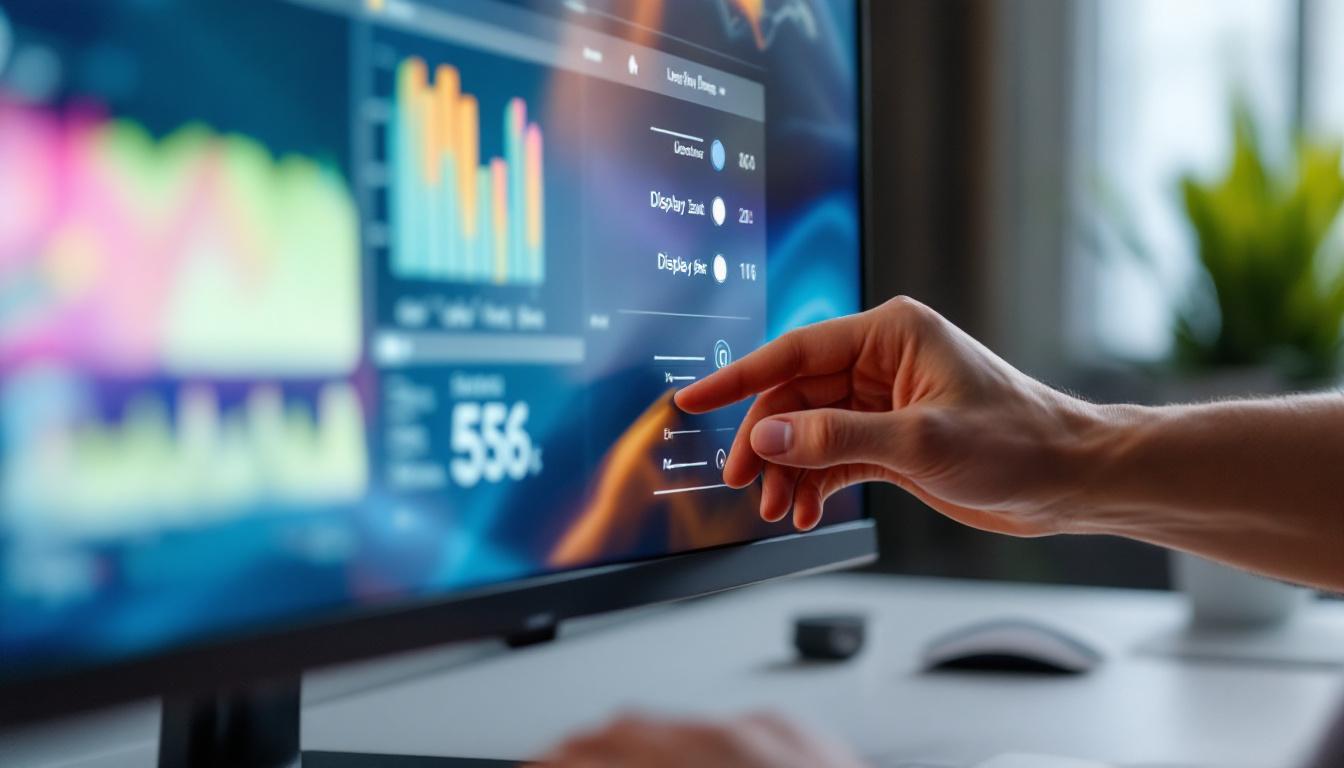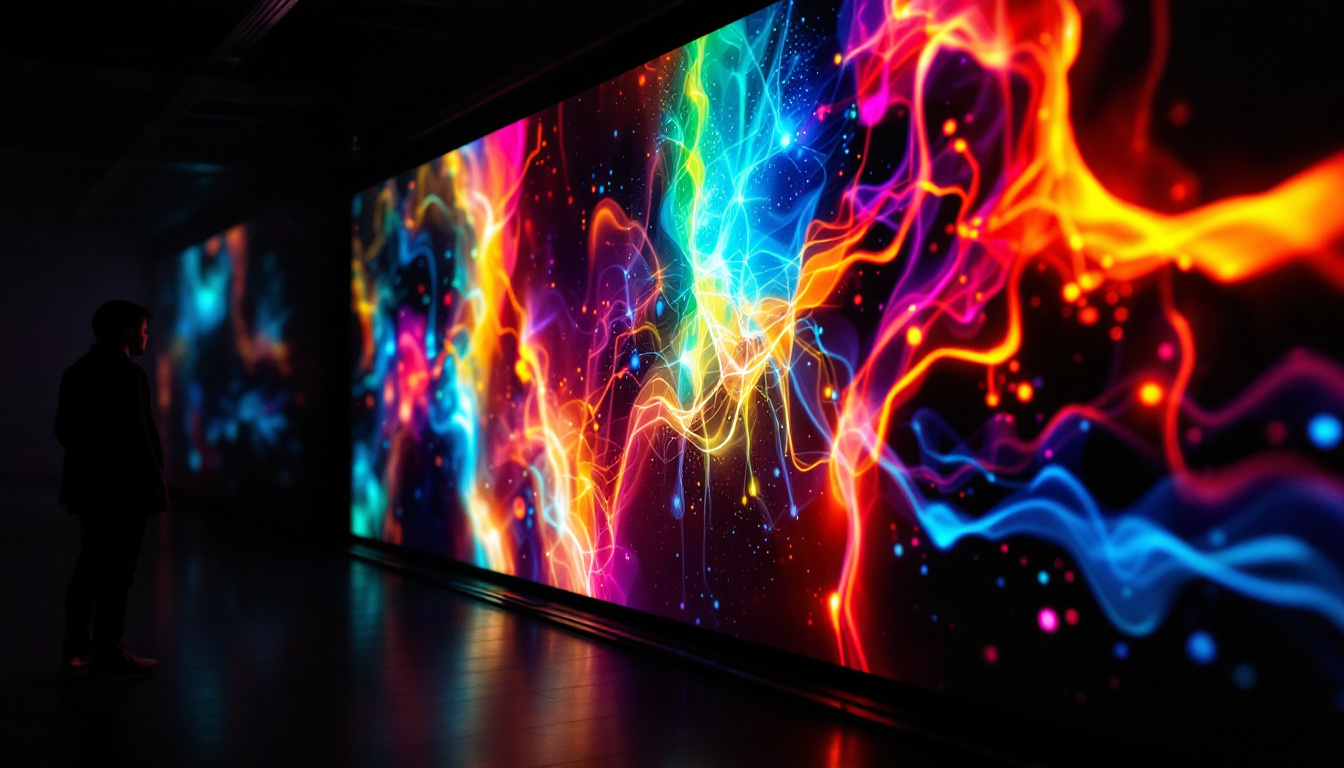In the modern landscape of digital communication, LED displays have emerged as a pivotal tool for conveying information effectively and engagingly. From advertising to information dissemination, these displays have transformed the way messages are delivered in various sectors. This article delves into the intricacies of LED displays, exploring their technology, applications, and the advantages they offer in the context of work environments.
Understanding LED Technology
LED stands for Light Emitting Diode, a semiconductor device that emits light when an electric current passes through it. This technology has revolutionized the display industry, offering numerous benefits over traditional display methods. The energy efficiency of LEDs is one of their standout features, consuming significantly less power than incandescent or fluorescent lights. This not only leads to lower electricity bills but also contributes to a reduced carbon footprint, making LEDs a more sustainable choice for both consumers and businesses.
How LED Displays Work
At the core of LED displays are tiny diodes that produce light. These diodes can be arranged in various configurations to create images and text. The displays typically consist of a matrix of red, green, and blue LEDs, which can be combined in different intensities to produce a wide spectrum of colors. This RGB (Red, Green, Blue) model is fundamental to how colors are generated on the screen. The ability to control each color channel independently allows for vibrant and dynamic visuals, which is why LED technology is favored in high-definition televisions and large-scale video walls.
The brightness and clarity of LED displays are influenced by factors such as pixel pitch, which refers to the distance between the centers of two adjacent pixels. A smaller pixel pitch results in higher resolution and better image quality, making it suitable for close-range viewing. Additionally, advancements in LED technology have led to the development of high dynamic range (HDR) displays, which enhance contrast and color accuracy, providing viewers with a more immersive experience. This is particularly beneficial in applications such as gaming and professional video production, where detail and color fidelity are paramount.
Types of LED Displays
LED displays come in various forms, each designed for specific applications. The most common types include:
- Indoor LED Displays: These are typically used in settings like shopping malls, airports, and conference rooms. They are designed for close viewing and offer high resolution. Their versatility allows for creative installations, such as digital signage and interactive displays that engage audiences in unique ways.
- Outdoor LED Displays: Built to withstand the elements, outdoor displays are larger and brighter, ensuring visibility even in direct sunlight. They often feature protective coatings to guard against moisture and UV damage, making them ideal for advertising billboards and sports arenas, where they can capture the attention of passersby from a distance.
- Transparent LED Displays: These innovative displays allow for visibility through the screen, making them ideal for storefronts and exhibitions. They create a stunning visual effect by blending digital content with the surrounding environment, allowing businesses to showcase products while maintaining an open and inviting atmosphere.
Another emerging type of LED display is the flexible LED screen, which can be bent and shaped to fit unconventional surfaces. This technology opens up new possibilities for creative advertising and artistic installations, allowing designers to push the boundaries of traditional display formats. As LED technology continues to evolve, we can expect to see even more innovative applications that enhance our visual experiences in everyday life.
Applications of LED Displays
The versatility of LED displays allows them to be used in a wide range of applications across different industries. Their ability to convey information dynamically makes them a preferred choice for many organizations.
Advertising and Marketing
One of the most prominent uses of LED displays is in advertising. Businesses utilize these displays to showcase promotions, product launches, and brand messages. The dynamic nature of LED screens enables advertisers to change content quickly and efficiently, capturing the attention of potential customers.
Moreover, LED displays can be programmed to display targeted advertisements based on the time of day or audience demographics, enhancing marketing effectiveness. This adaptability is a significant advantage over traditional static billboards. For instance, a coffee shop might display a morning promotion for breakfast items and switch to afternoon deals on iced beverages, ensuring that the messaging is relevant to the time and audience.
Information Dissemination
LED displays are also widely used for information dissemination in public spaces. Airports, train stations, and bus terminals employ these screens to provide real-time updates on schedules, delays, and other essential information. The clarity and brightness of LED displays ensure that the information is easily readable, even from a distance.
In corporate environments, LED displays can serve as digital signage for internal communication, displaying messages, announcements, and performance metrics to keep employees informed and engaged. Additionally, educational institutions are increasingly adopting LED technology to enhance learning experiences. Classrooms and lecture halls equipped with LED displays can present interactive content, making lessons more engaging and visually stimulating for students. This integration of technology not only aids in information retention but also encourages collaborative learning through shared digital resources.
Advantages of LED Displays
The adoption of LED displays comes with numerous advantages that make them an attractive option for businesses and organizations. Understanding these benefits can help in making informed decisions regarding display technology.
Energy Efficiency
One of the standout features of LED technology is its energy efficiency. LED displays consume significantly less power compared to traditional display technologies, such as LCD and plasma screens. This not only reduces operational costs but also contributes to environmental sustainability.
In an era where energy conservation is paramount, the low energy consumption of LED displays is a compelling reason for their widespread adoption. Furthermore, many LED displays are equipped with smart technology that allows for automatic brightness adjustments based on ambient light conditions. This feature not only enhances visibility but also optimizes energy use, providing even greater savings for businesses.
Longevity and Durability
LED displays are known for their longevity. With a lifespan of up to 100,000 hours, these displays outlast many other types of screens. This durability translates to lower maintenance costs and less frequent replacements, making them a cost-effective investment in the long run.
Additionally, outdoor LED displays are designed to withstand harsh weather conditions, ensuring they remain functional and effective regardless of the environment. The robust construction of these displays often includes features such as water resistance and UV protection, which further enhance their resilience. This means that businesses can rely on LED displays not just for their longevity, but also for their ability to maintain high performance in challenging outdoor settings, such as busy urban areas or during extreme weather events.
Moreover, the impact resistance of LED displays makes them ideal for high-traffic locations where accidental bumps or impacts are likely. This durability ensures that the displays continue to operate effectively, providing continuous service and maintaining brand visibility without the interruptions that can occur with less sturdy technologies.
Challenges and Considerations
While LED displays offer numerous benefits, there are also challenges and considerations that need to be addressed. Understanding these factors is crucial for organizations looking to implement LED technology.
Initial Investment Costs
The initial cost of purchasing and installing LED displays can be relatively high compared to traditional display options. This upfront investment can be a barrier for some businesses, particularly small enterprises with limited budgets.
However, it is essential to consider the long-term savings associated with energy efficiency and reduced maintenance costs. Over time, the return on investment can justify the initial expenditure.
Content Management
Effective content management is vital for maximizing the impact of LED displays. Organizations need to ensure that the content displayed is relevant, engaging, and updated regularly. This requires dedicated resources and planning to create a content strategy that aligns with business goals.
Moreover, the use of content management systems (CMS) can streamline the process, allowing for easy updates and scheduling of content across multiple displays.
The Future of LED Displays
The future of LED displays looks promising, with ongoing advancements in technology and applications. Innovations are continually emerging, enhancing the capabilities and functionalities of these displays.
Integration with Smart Technology
As smart technology becomes increasingly prevalent, LED displays are also evolving to integrate with IoT (Internet of Things) devices. This integration allows for real-time data sharing and interaction, enabling displays to respond dynamically to external conditions.
For instance, an LED display could adjust its brightness based on ambient light levels or display personalized content based on user interactions. Such advancements will enhance the user experience and broaden the scope of applications for LED technology.
Enhanced Visual Experiences
Future developments in LED technology are likely to focus on improving visual experiences. Innovations such as microLED and miniLED technologies promise to deliver even higher resolutions, better color accuracy, and improved viewing angles.
These advancements will make LED displays more appealing for applications that require high-quality visuals, such as entertainment venues, museums, and art installations.
Conclusion
LED displays have become an integral part of modern communication, offering a dynamic and effective way to convey information. Their versatility, energy efficiency, and longevity make them a preferred choice across various industries. While there are challenges to consider, the benefits often outweigh the drawbacks, making LED displays a worthwhile investment.
As technology continues to evolve, the future of LED displays holds exciting possibilities. Organizations that embrace this technology will likely find themselves at the forefront of effective communication and engagement, leveraging the power of LED displays to connect with their audiences in innovative ways.
Discover LumenMatrix LED Display Solutions
Ready to elevate your communication strategy with the latest in LED technology? LumenMatrix is at the forefront of innovation, offering a diverse range of LED display solutions tailored to your needs. From captivating Indoor LED Wall Displays to robust Outdoor LED Wall Displays, and from dynamic Vehicle LED Displays to sleek LED Poster Displays, our products are designed to enhance brand visibility and engage your audience. Embrace the future of visual communication with LumenMatrix and transform your space with our cutting-edge LED Sports Displays, interactive Floor LED Displays, and Custom LED Display options. Experience the difference with our All-in-One LED Display and LED Transparent Display solutions. Check out LumenMatrix LED Display Solutions today and start creating unforgettable visual experiences.

